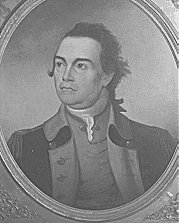Baby, It's Cold (or Hot) Outside
This isn't about global warming (also known as climate change). This blog focuses on the weather, an often overlooked factor by some who study military history. However, serious warfare students understand that weather can often—and did often—play a crucial, if not decisive, role in military operations.
There are many examples: Crusaders overwhelmed by intense heat in Palestine, German divisions frozen outside Moscow and Stalingrad, or Napoleon's invasion halted by an early winter. The list goes on. Perhaps the most decisive and specific instance of weather affecting warfare was the typhoon that sank the Mongol fleet preparing to invade medieval Japan—the Kamikaze, which gave its name to Japan's WWII suicide attacks.
 |
| The invading Mongol fleet destroyed by the "Divine Wind" that saved Japan |
Weather's Impact
Like any other war, especially one lasting eight years like the American War for Independence, the weather was bound to influence events. Since our First Patriots and the British didn't have a modern weather system, they had to rely on an almanac, early barometers, or local knowledge of past weather patterns. But mostly, they simply had to react to the weather as it happened. That could complicate things when unusual or unexpected weather shifts occurred.
Year after year, across all four seasons, rebels and redcoats dealt with extremes of rain, snow, heat, and fog—as well as tides, ice formations, and winds. The weather was unpredictable, sometimes helping one side and hindering the other, and sometimes hindering both. Savvy commanders often sought to utilize the weather to their advantage or mitigate damage caused by its extremes. The weather sometimes shaped the Revolutionary War just as much as political, economic, or logistical factors.
The Heat of Battle
During the Battle of Long Island in 1776, the hot and oppressively humid weather likely played a role, which may have been one reason the long march around the Americans occurred at night. When the humidity turned into violent thunderstorms, both armies were slowed by mud and poor visibility, making the use of firelocks nearly impossible. The stormy weather and shifting tides prevented the Royal Navy from cutting off Washington's forces on Long Island. Washington used the weather to his advantage and slipped away during the stormy night.
The early morning fog also blocked the British from seeing his retreat until it was too late. Weather, combined with decisive and heroic action, truly saved the Continental Army. The Battle of Monmouth was fought in unusually hot and humid conditions, too. This slowed the British column and gave Washington the chance to catch them as they marched across New Jersey.
Washington's surprise attack at Germantown might have stopped Howe's plan to capture Philadelphia, but this time, the heavy morning fog confused the American attackers, and the British were warned and rallied. Later in the war, in the southern theater, hot and humid weather influenced Cornwallis's decision to abandon his shrinking army of baggage and heavy equipment, even heavy clothing, as he desperately tried to catch the clever Nathaniel Greene in the Carolinas. We know how that ended.
 |
| The Continental Army retrograde shielded by a summer storm |
General Frost
Much more widely remembered are the cold campaigns: Nathaniel Greene's men dragging desperately needed cannon through the snowy mountains of New England to help win the siege of Boston. The winter at Valley Forge is iconic.
But Washington's Christmas crossing, despite biting cold and gathering ice floes, is just as significant. The weather prevented two of his divisions from crossing, but his main column used it as cover to surprise the Hessian garrison at Trenton. The cold winter weather also caused the British to go into "winter quarters" earlier than the successes of the 1776 campaign and the nearing victory.
 |
| The weather helped with the element (sic) of surprise at Trenton |
Less well known is the winter war fought in the Jerseys after Washington moved to Morristown for his winter quarters. Instead of a well-earned rest, it was the British who endured hardships as they struggled to gather supplies. The militias, and later the continentals, ambushed forage parties, attacked relief columns, and bushwhacked couriers. The British commander Lord Howe suffered casualties he could not easily replace - and gained no military advantage.
 |
| Cold Winter at Valley Force was only one of many, and not the worst |
Perhaps the campaign most affected by the cold is the least known: the 1775 invasion (liberation?) of Canada in twin attacks across America's harsh and rugged northern frontier. Colonel Benedict Arnold led several hundred men through the wilds of Maine, while General Richard Montgomery led a column through upper New York towards Montreal. The weather turned cold earlier than usual that year. Launching a northward invasion in the fall left the Americans suffering through rapidly cooling weather that plagued them all the way to Quebec.
The weather hampered both expeditions as each column battled through a mix of ice, snow, and rain. Over six inches of snow flooded Arnold's column in a single night in late October. The weather alone had severely weakened the invasion forces by the time they met near Quebec in early December. With more freezing weather approaching, Montgomery decided to attack Quebec rather than lay siege to the city.
Hoping to use the weather to their advantage, the Americans launched an attack during a severe snowstorm. However, the blinding snow caused chaos during the assault, which ended in failure and resulted in the deaths of Montgomery and the wounding of Arnold. Arguably, two of America's best commanders were lost to General Frost.






